Bee vs wasp? To the untrained eye, these two are pretty much the same. You see something black and yellow buzzing around and you duck for cover, no matter if it’s a bee, a wasp or a hornet–they all sting, or so you think.
Still, what is the difference between bees, hornets and wasps and, most important, are they all dangerous? Find out in this bee vs wasp vs hornet guide.
Bees
We depend on bees and not because we get honey from them, we could live without that.

What we could not live without is plant food–and many plants are pollinated by bees.
Types of Bees
There are over 20,000 types of bees in the world and some 4,000 types can be found in North America. You’d need volumes to talk about each type, so we’ll have to focus on the ones you’re most likely to find in your garden.
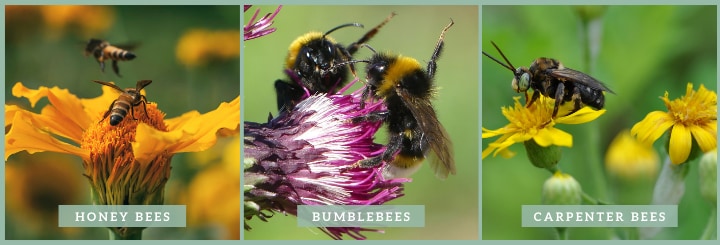
- Western Honey Bees
- Bumblebees
- Carpenter Bees
Bee Identification: What Do Bees Look Like?
Bees vary in size between one-half and three-fourths of an inch. Contrary to what many people think, not all of them have black and yellow bands on their bodies, just as not all black-and-yellow flying insects are actually bees.
One thing you’ll notice about bees is that they have hairy bodies, well, hairy for an insect. Those little hairs are essential as they allow bees to collect pollen and carry it around, which is what pollination is all about.
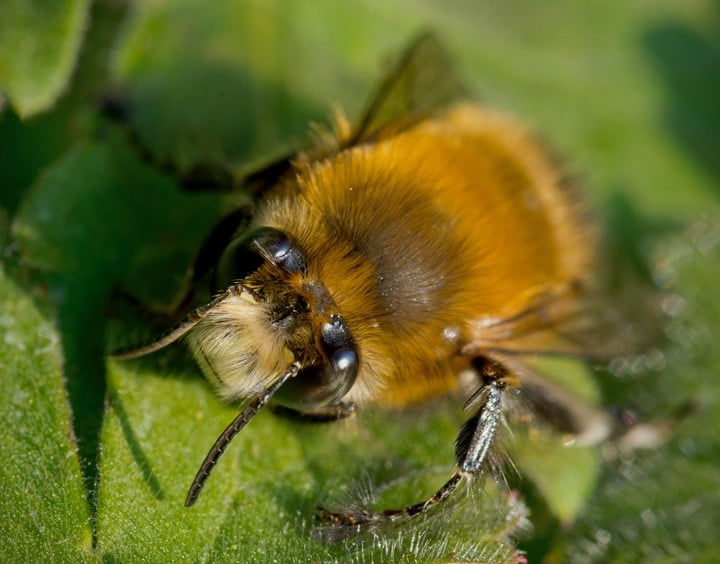
And, of course, they have stingers!
A Bee Sting: Will Bees Sting You?
The idea that every time a bee comes near you it’s preparing to attack you is plain wrong. Bees do not sting unless they feel threatened.
Yes, if you try to swat a bee away, it might very well be that it will sting. Bees don’t know you’re scared of them and they will take your frantic movements as a threat.
The fact is bees are reluctant to sting as in most cases it will kill them. The reason is that ordinary honeybees have a barbed stinger and once it penetrates the skin it cannot be removed.
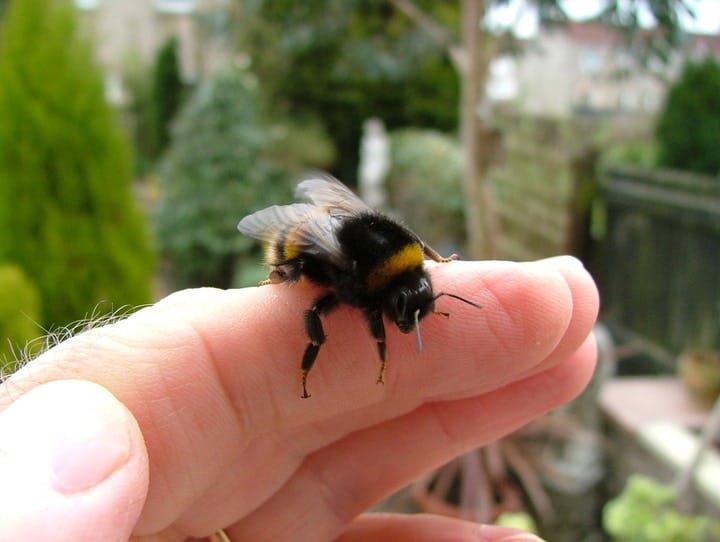
As the bee tries to fly away and the stinger is stuck, this move tears apart the lower part of their bodies, which will kill them.
It won’t happen right there on the spot, you won’t have the satisfaction of seeing a bee pay for the pain it has caused you, but it will soon die.
The best course is to let a bee, well, be and wait until it goes away or to back up slowly avoiding brusque movements.
Bumblebee vs Honey Bee
Western honey bees are small oval insects which can be easily recognized by their coloring, golden brown with black abdominal stripes.
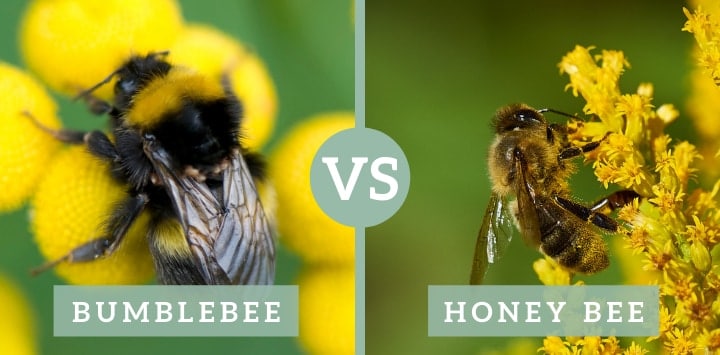
If you meet a honey bee in your garden chances are you will see little grain of pollen stuck to its legs, a clear indicator that the worker bee–because those you normally see are female worker bees–has been around visiting flowers.
Now, bumblebees are a bit larger than regular honey bees and their bodies are covered with a “coat” of black and yellow hair.

They’re not aggressive and you can easily tell them apart by the tell-tale noise they make, which gives them their name.
It’s not like they’re singing. That noise is created by a bumblebee’s rapid movement inside a flower.
It’s like it’s dancing, but the purpose of this moving around is to detach the pollen and make it stick to its legs. Honey bees do the same thing, only on the quiet.
Carpenter Bee vs Bumble Bee
Carpenter bees are about the same size as bumble bees but they fly much faster. Also, carpenter bees are less colorful than bumble bees and beneath those little hairs they have black bodies.
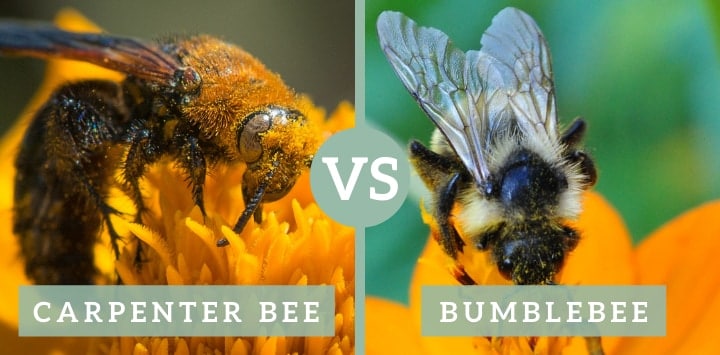
If you get close enough to a carpenter bee, you will notice a distinctive black spot on the top of the middle part of their bodies, which is known as the thorax.
Carpenters are solitary bees, which means they nest alone, sometimes by boring holes in the walls of your house, which is how they got their name. They can drill through wood just as easy as a power tool.
Now let’s continue our bee vs wasp comparison with wasps.
Wasps
There are around 100,000 types of wasps in the world and most of them look a lot like bees. That’s why it’s useful to know the bee vs wasp difference.
Types of Wasps
The most common types of wasps in the United States are yellow jackets, paper wasps, potter wasps, and hornets.
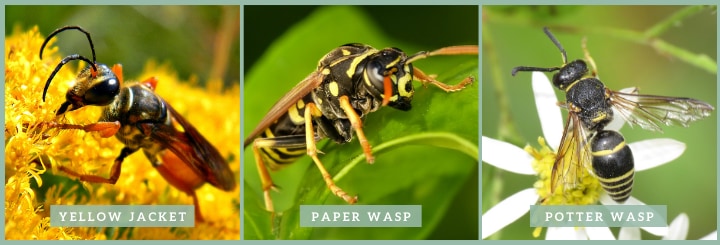
While wasps are pretty much useless as pollinators, they are very good for pest control, as they will attack various bugs with their stingers.
Wasp Identification: What do Wasps look like?
Most wasps species present the same black and yellow pattern but have less hair.
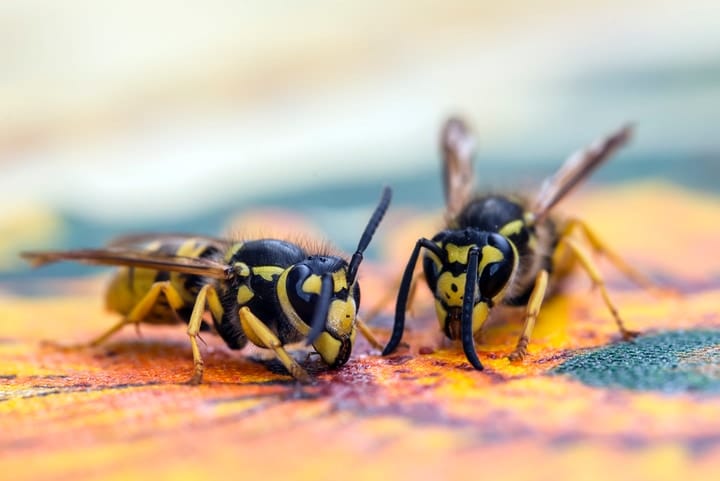
Wasps are famous for their narrow waists, which in these insects is the part where the thorax meets the lower abdomen.
A Wasp Sting: Will Wasps Sting You?
Wasps have a reputation for being more aggressive than honey bees, but the truth is they won’t attack a human unless they feel threatened.
Just like honey bees, wasps use their stinger as a defence mechanism. They only sting when they get irritated by a person’s efforts to swat the insect away. Also, they will sting when they get the feeling that their home is under attack.
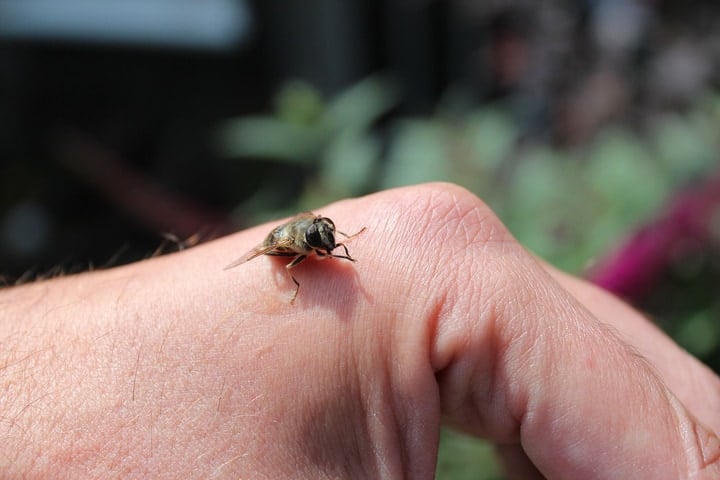
If you find a wasp nest on your property it’s best to call an exterminator because if you don’t know what you’re doing you might be attacked by a swarm of angry wasps and this can be life-threatening.
Tip: Keep in mind that wasps have very keen eyes and can detect movement once you get within 6 feet of their nest.
Bee vs Wasp
The main thing that can help you tell a honey bee from a wasp is the waist.
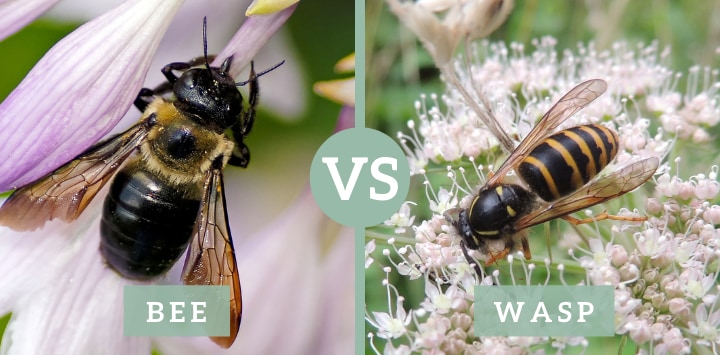
Wasps are more slender and less hairy and this is because wasps don’t work like a regular honey bee to pollinate the flowers. This is the main bee vs wasp difference.
In other words, wasps don’t provide this essential service. Another bee vs wasp difference if you look closely is that when they fly, wasps let their legs hang down, unlike bees.
Hornets
Hornets belong in the wasp family and they do provide some pollination services, unlike most of their relatives.
Hornet Identification: What Do Hornets Look Like?
What sets apart a hornet from other species of wasps is that they don’t have a narrow waist. Hornets have thick bodies and instead of the classical black and yellow pattern they have black and white stripes.
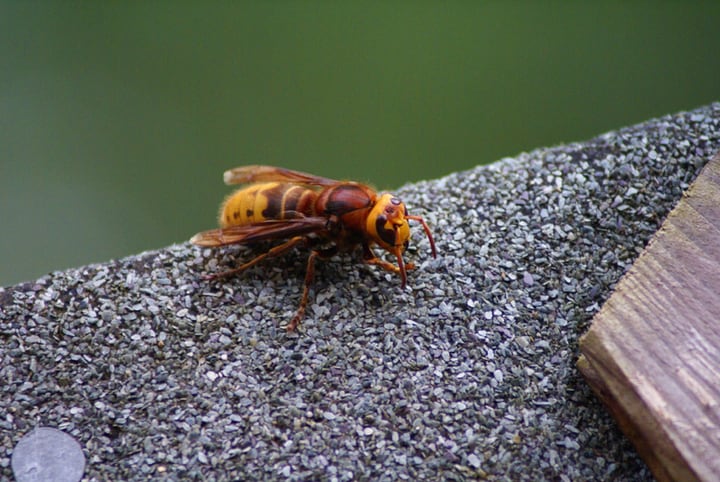
Some types of hornets, especially those who have come to North America from Europe, are even bigger than carpenter bees and they’re so large you can see their stingers clearly.
A Hornet Sting: Will Hornets Sting You?
Hornets tend to live in papery nests high up in trees and they will launch a vicious attack if they feel their house is in danger. Use extreme caution when approaching a hornets’ nest and don’t even think about kicking it.
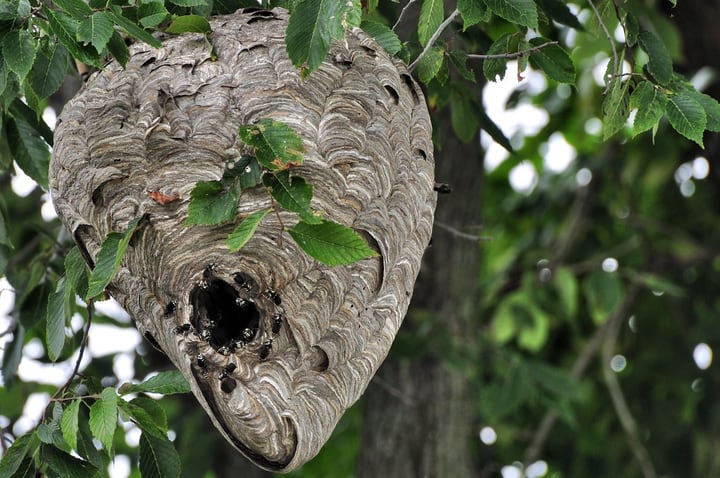
In fact, killing just one hornet might prove a huge mistake as the insect will release very powerful pheromones to alert its relatives their nest is under attack.
Be warned that these pheromones can stick to clothing, so the other hornets can and probably will track you down.
Bee vs Hornet
Bees are smaller than hornets and in many cases you can tell them apart by their coloring. You won’t find bees with a black and white pattern on their bodies like hornets.
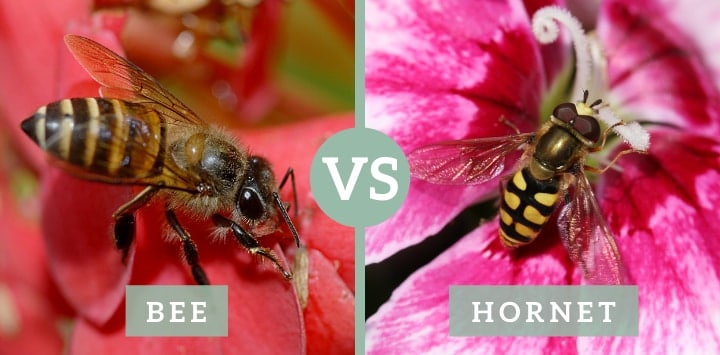
On the other hand, unlike other wasps, hornets provide some pollinating services, although they’re less hard-working than bees.
Yellow Jackets
Yellow Jackets are a particular type of wasps and they are a carnivorous species. The good news is that they have little interest in flowers, so you won’t find them in your flower garden unless they have a nest nearby.
Yellow Jacket Identification: What Do Yellow Jackets Look Like?
There are 16 types of yellow jackets in the United States and most of them are black and yellow. Some yellow jackets actually have white stripes and have red markings on their bodies.
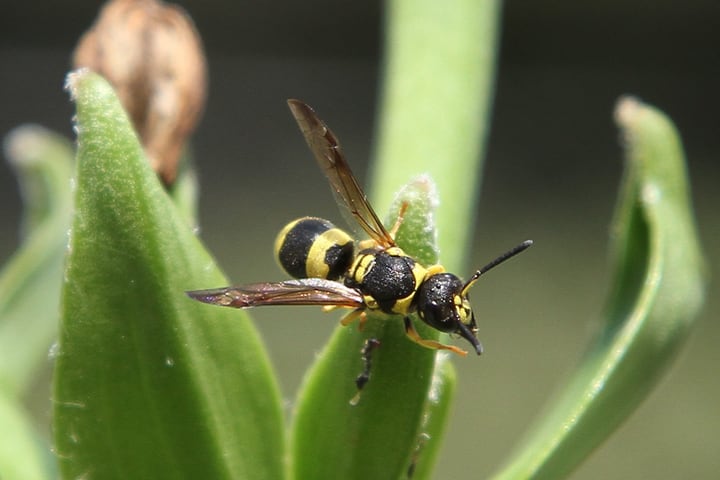
A Yellow Jacket Sting: Will Yellow Jackets Sting You?
Not only will they sting, but they will sting multiple times. The stinger of a yellow jacket is lance-like and only has one little barb at the tip.
That’s not enough for the stinger to get stuck once it pierces the skin which means yellow jackets can stab at will, which is very bad news for you if you ever cross paths with it.
Bee vs Yellow Jackets
Yellow jackets are roughly the same size as honey bees and many species are the same color as bees. One way to tell them apart is that yellow jackets do not have tan-colored hairs on their bodies.
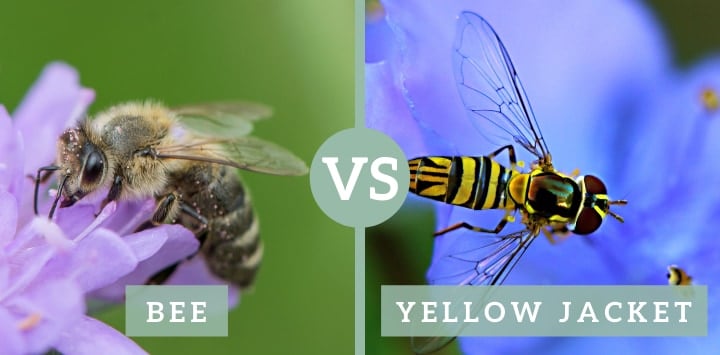
Also, yellow jackets don’t have little pollen baskets on their legs, since they’re not interested in that. Unlike bees who are attracted to sweet things, yellow jackets are carnivorous and they prey on ants.
If you’re out having a picnic, the black-and-yellow nuisance circling around might very well be a yellow jacket attracted by the smell of meat coming from the burgers sizzling on the grill.
Bee vs Wasp Frequently Asked Questions
Many people are confused about bees and wasps, especially as they are hard to tell apart for regular folk. Here are the most common questions people have on when it comes to the old bee vs wasp dilemma.
What is the difference between a bee and a wasp?
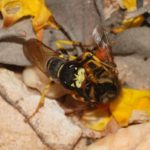
Bees and wasps might look very much alike, as most of them have black and yellow stripes on their bodies. One of the main differences is that wasps have very small waists, something you won’t see in bees.
At the same time, wasps have less hair on their bodies as they’re not interested in collected pollen. In the natural world, wasps are of little use as pollinators, but they are great for pest control.
Which is more dangerous wasp or bee?
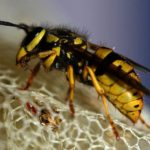
This is sort of a myth, as wasps are not more dangerous than bees. Both species only attack a human when they feel threatened.
As it’s much more common to run into a wasps nest, you have more chances to be stung by a wasp, but that’s only because it’s protecting its home, not because they’re particularly aggressive as a species.
On the other hand, there are notable differences between the stingers of the two species. While a bee has a barbed stinger and can only sting once, wasps have lance-like stingers and can use it multiple times.
However, when a bee stings you, it injects all the venom in its sack, something like 50 micrograms of toxins. As the wasp needs to conserve its venom, it will only inject between 2 and 15 micrograms of it at a time.
Do bees kill wasps?
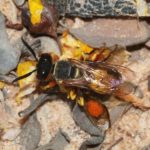
Yes, there’s a permanent war between bees and wasps. Most often it’s one or several wasp scouts checking out a beehive. The bees on guard react swiftly as it’s crucial for them to kill the scouts.
Should these get away, they might return with a whole swarm, and then the beehive will be in great danger.
There are two ways bees kill wasps. Bee species of European origin sting wasps and they can do this multiple times as the stinger doesn’t get stuck inside the enemy’s body, as it does when a honey bee attacks a human.
Bees of Asian origin use their famous thermal defense mechanism. Basically, the bees form a tight ball around the wasp scout killing it with the heat they generate.
It’s an exhausting process and the bees risk dying themselves because of the intense heat.
What is the difference between a bee, a wasp, and a hornet?
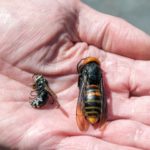
While bees and wasps are similar in size, hornets are typically larger and most have a black and white pattern instead of the traditional yellow.
Wasps stand apart with their slim waist. Hornets, which are a type of wasp, do not share this characteristic and are rather bulky.
At the same time, wasps, hornets included, have less hair on their bodies as they’re not interested in collecting pollen, which is why they don’t even have pollen baskets on their legs.
Another big difference is that honey bees have barbed stingers which they can only use once before they die, whereas wasps and hornets have straight stinger with only one small barb.
This allows them to pull out the stinger safely and live to sting another innocent bystander.
To Bee or Not to Bee?
When a flying yellow thingy is buzzing around your head there’s little time to wonder whether it’s a honey bee, a wasp, or indeed a hornet.
Knowing the difference between bee vs wasp vs hornet is less important at that particular moment, but one thing you should definitely know is they won’t attack unless they feel threatened.
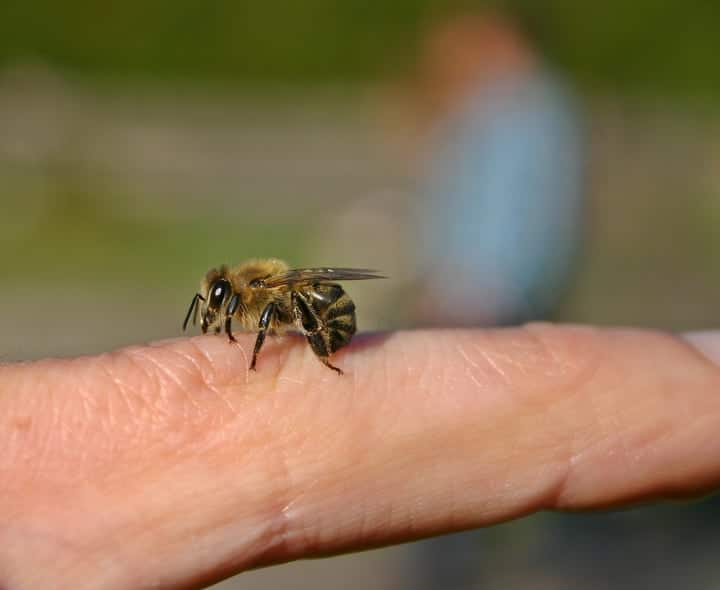
So, keep calm and back away, rather than trying to swat the buzzer with precipitated movements.
If you liked this article on bee vs wasp, make sure to check out other articles on wasps and bees, including types of bees and wasps and beekeeping.

Leave a Reply